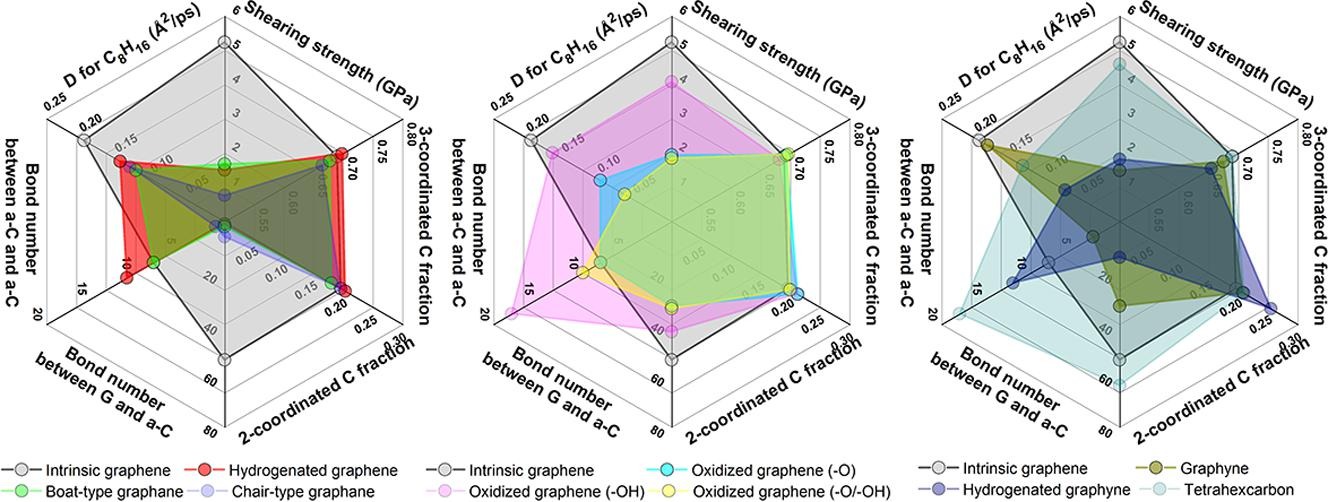Exploring the different roles of graphene and its derivatives as nano-additives at amorphous carbon surface through reactive molecular dynamics approach
-
Authors :
Xiaowei Li, Dekun Zhang, Kwang-Ryeol Lee
-
Journal :
Computational Materials Science
-
Vol :
195
-
Page :
110499
-
Year :
2021

Abstract
Graphene (G) and its derivatives exhibit great potential as oil-based additives to enhance the anti-friction capacity of amorphous carbon (a-C) interface for industrial applications. However, due to the structural diversity of G derivatives and the limitation of experimental characterization, the difference of intrinsic G and its derivatives in improving the lubricity and the underlying tribochemical information is still unclear, leading to a lack of fundamental understanding of the friction mechanism. Here, we address these issues through the atomic-scale simulation and demonstrate that compared to the intrinsic G, its derivatives can further reduce the friction resistance at a-C surface, especially the chair-type graphane with the reduction of friction coefficient by 86%. Most importantly, the fundamental friction mechanism caused by G derivatives mainly attributes to the G-induced cross-linking and cold welding of mated a-C surfaces, although it is also affected by the passivation of the friction interface and the hydrodynamic lubrication of base oil. These outcomes can guide the R&D of advanced a-C/lubricant synergy systems for technical applications.
















